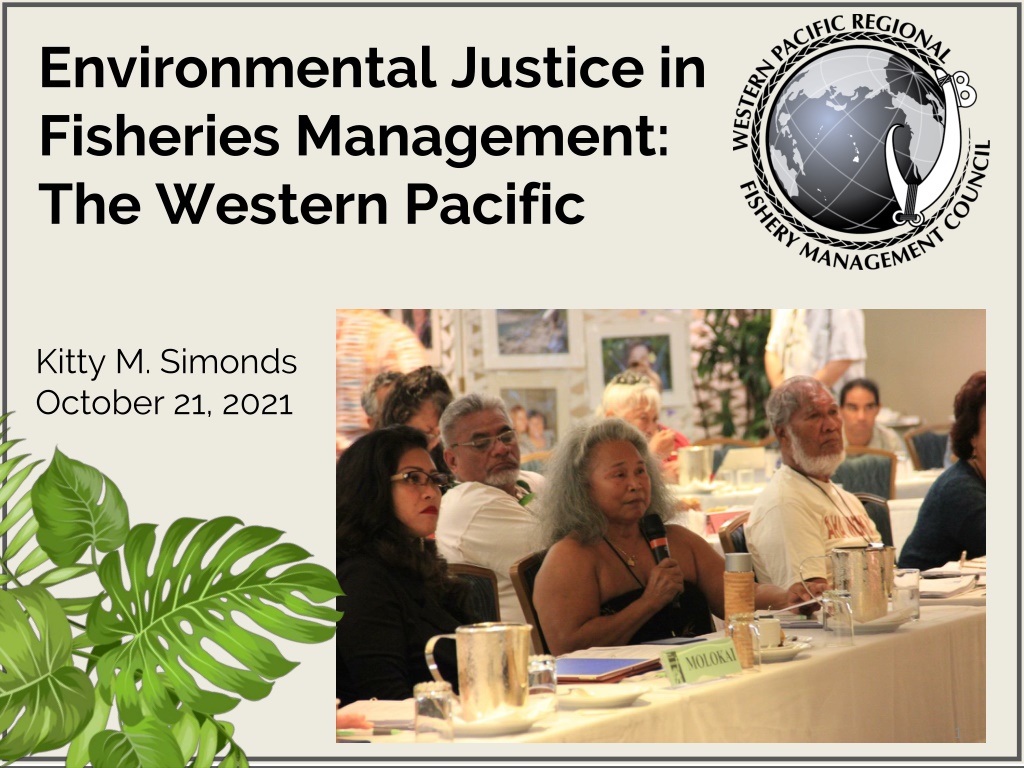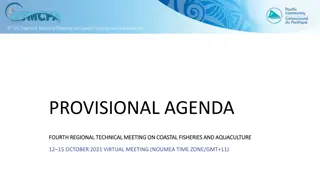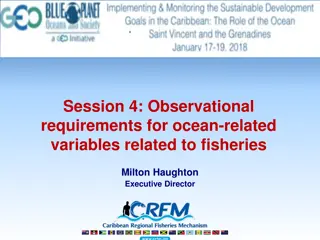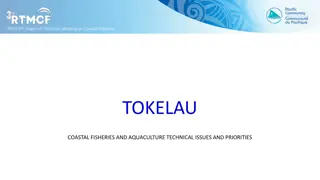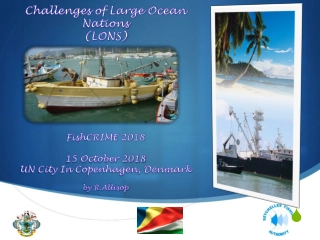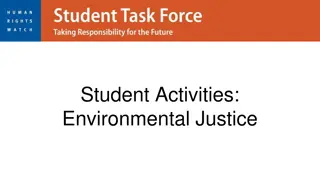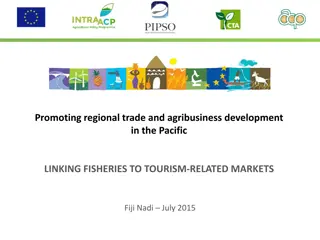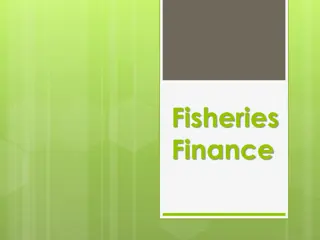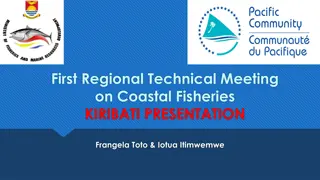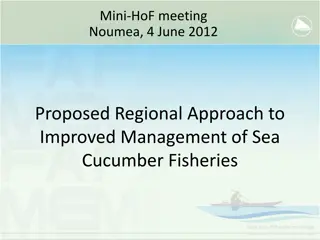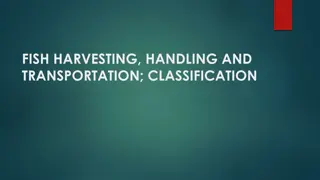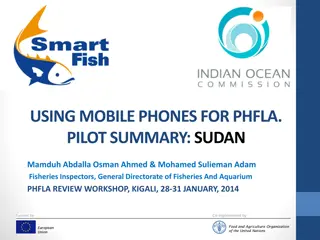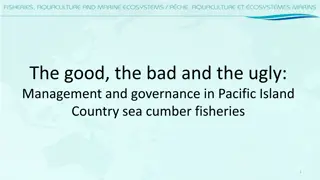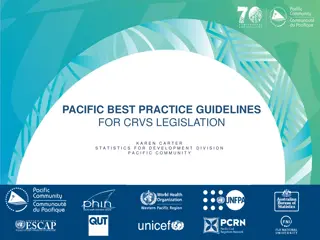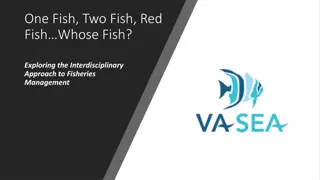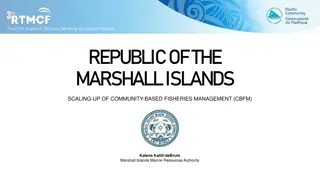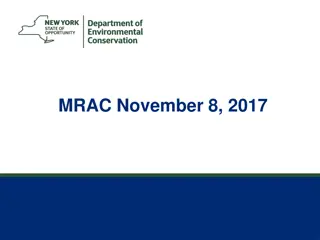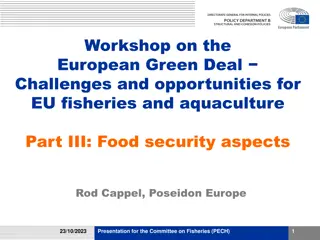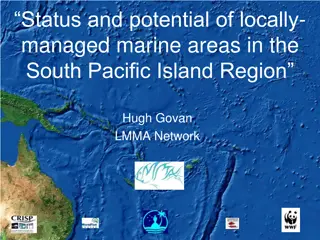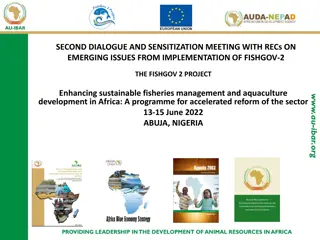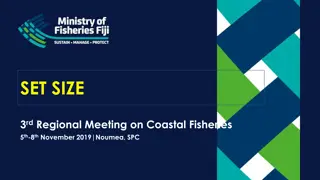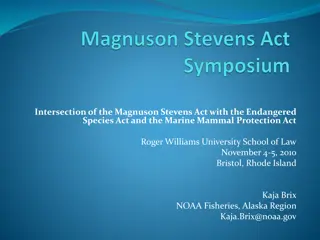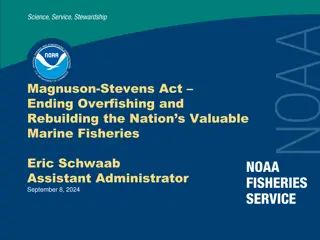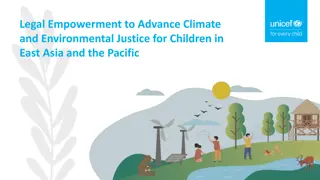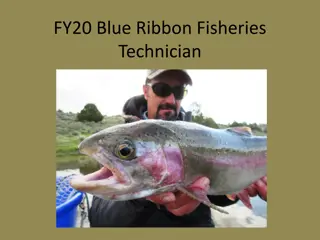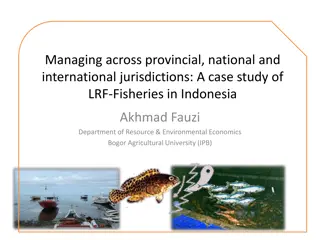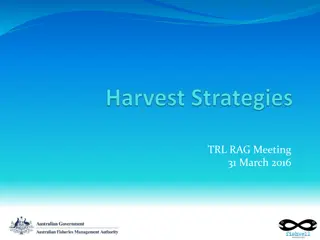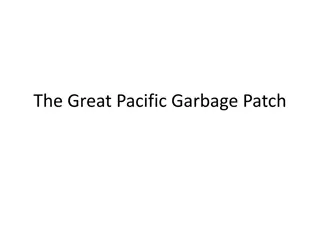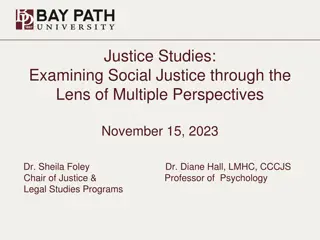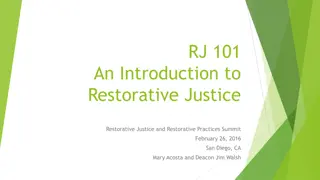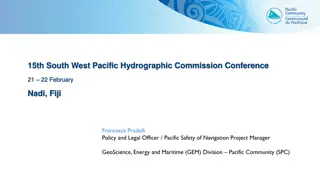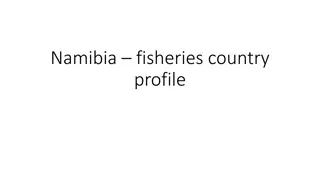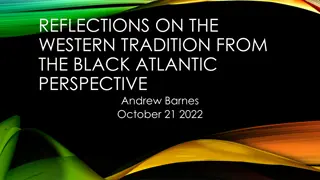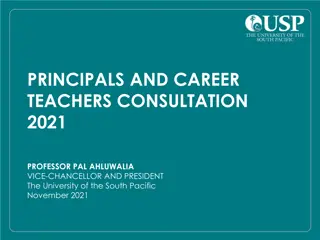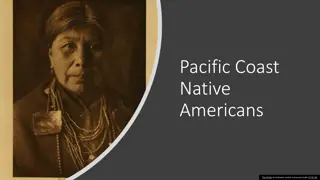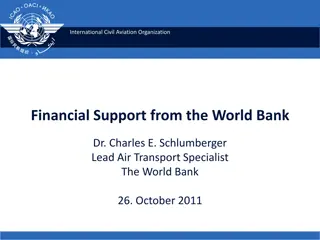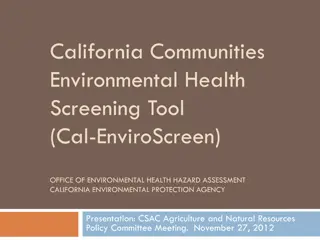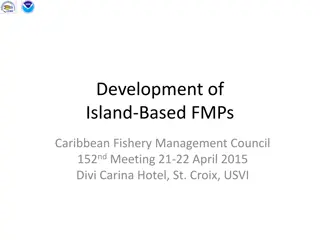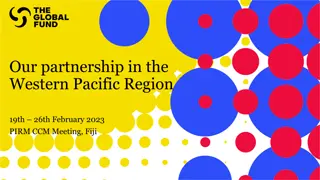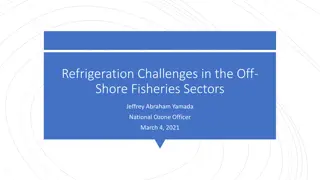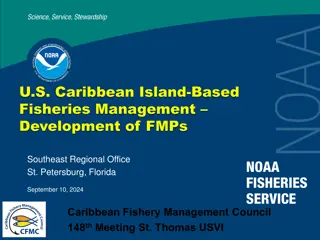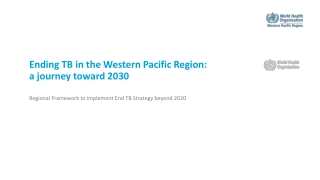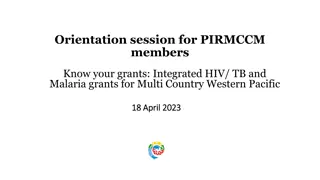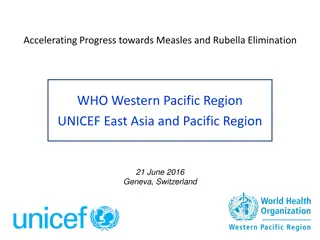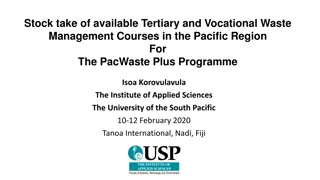Environmental Justice in Fisheries Management: The Western Pacific
This study addresses environmental justice issues in fisheries management in the Western Pacific, focusing on the impact on Asian American, Native Hawaiian, and Pacific Islander populations. It discusses the challenges faced in managing fisheries resources, the importance of community engagement, and the need for tailored solutions to address data limitations and enhance community representation.
Download Presentation

Please find below an Image/Link to download the presentation.
The content on the website is provided AS IS for your information and personal use only. It may not be sold, licensed, or shared on other websites without obtaining consent from the author. Download presentation by click this link. If you encounter any issues during the download, it is possible that the publisher has removed the file from their server.
E N D
Presentation Transcript
Environmental Justice in Fisheries Management: The Western Pacific Kitty M. Simonds October 21, 2021 1
More than 75% of population identifies as Asian American, Native Hawaiian and Pacific Islander (AANHPI) Samoan, Chamorro, Refaluwasch, Hawaiian 1 State, 2 Territories, 1 Commonwealth 3 Time Zones and the International Dateline 2
Monuments close off more than areas, they close off access to, and opportunities for employment/economic opportunities, food security and cultural connections with the ocean and its resources Antiquities Act bypasses the public process, while MSA includes the publicin a bottom-up process to manage fisheries within EEZ 3
FRAMEWORK AND PROGRAMMATIC SUPPORT Species-based to Archipelagic-based Fishery Ecosystem Plan Restructured Council family AP, PT, REAC, SC Council 5-Year Program Support community engagement - Guam and CNMI village mayors, Hawaii Aha Moku System, American Samoa Matai System Indigenous Island Coordinators Develop Community-Based Fishery Management Plans Village of Malesso (Guam); Northern Islands (CNMI); AS Enforcement Assist governments in developing fishery projects, disaster relief assessments (AS/Guam), facilitating user conflict issues between Guam and Federated States of Micronesian fishers 4
DATA-POOR FISHERIES NS1 guidance for data-limited stocks doesn t work! WP data collection programs need to change to improve the current system to meet MSA requirements MSA should be tailored for regional flexibility to avoid unrealistic burdens on island communities. A. Samoa Bottomfish ACL - 106,000 lbs 5,000 lbs Guam Bottomfish ACL - 66,000 lbs 31,000 lbs CNMI Bottomfish stock status high uncertainty (Kobe plot) Reduces communities economic stability in the absence of clear data-driven management * 2019 NMFS PIFSC Territorial BF stock assessments 5
COMMUNITY INVESTMENTS & REPRESENTATION Technical and Administrative Capacity WP communities lack technical/administrative capacity & resources to compete in national funding competitions - Saltonstall-Kennedy / Bycatch Reduction Engineering Program Regional solicitation, review and distribution of funds - Cooperative Research Program Representation and Meaningful Engagement Memberships on federal/national advisory bodies ensure Pacific Island perspectives are considered - MAFAC Integration of Traditional Ecological Knowledge into management Document Fishermen Observations Work with traditional governance systems and communicate in indigenous/local language Matai system in American Samoa Village Mayor structure in Mariana Islands Aha Moku system in Hawaii 6
MSA SUPPORTS AANHPI Marine Education and Training US Pacific Territories Fishery Capacity-Building Scholarship Marine Science Course on Fishery and Resource Management Pacific Insular Area Fishing Agreements US Participating Territory Specified Fishing Agreements - Hawaii Longline Limited-Access Permit and US Pacific Territories Projects funded - Guam Fishing Platform, American Samoa Longline Gear Diversification, CNMI Bottomfish Development and Training Community Development Program Provides access to traditional fishing practices through regulatory relief - exemption of basket-style gear in longline closures Community Demonstration Project Program Provides direct grants of $500K annually (unfunded since 2011) for up to 5 community infrastructure and fishery development projects - Heeia Kea Fishpond Restoration and CNMI Fishermen s Cooperative 7
DISPROPORTIONATE BURDEN US funds Pacific Island and East Asian Nations with $1.4B for Economic Development, including fisheries, yet these nations remain adversarial to US Pacific Island fishing interests. Level the Playing Field! Council-managed fisheries, including the HI longline fishery, do not enjoy any special privileges that are afforded to other island nations HI LL fishery has the lowest catch limit for bigeye tuna HI and AS fisheries are the international gold standard for monitoring and compliance Competing foreign fisheries are heavily subsidized - China provides $7.3B in subsidies, 91-95% classified as harmful The US Freely Associated States receive $262M in economic development annually 8
Biden Proclamation: Indigenous Peoples Day (10/8/21) The Federal Government has a solemn obligation to lift up and invest in the future of Indigenous people and empower Tribal Nations to govern their own communities and make their own decisions. "You must make difficult decisions, but if you make those decisions with the counsel and advice from traditional practitioners and those who are most closely affected by, and connected to a particular resource or area, your decisions will be sound." - Chief Justice William S. Richardson, Supreme Court Hawaii; a local boy born in Honolulu who attended public high school, University of Hawaii (Manoa) and University of Cincinnati College of Law 9
